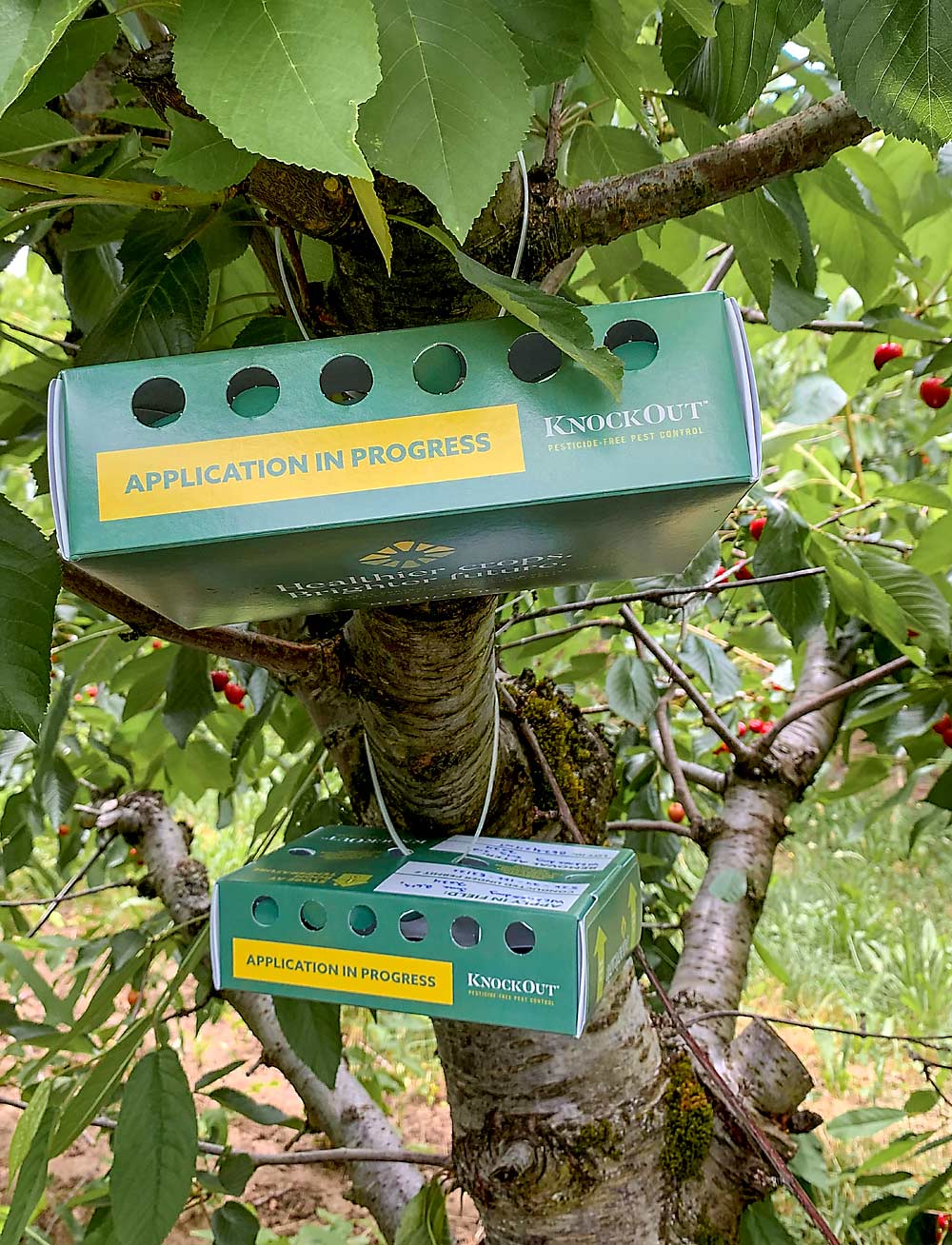—by Ross Courtney

A genetics firm and an Oregon State College entomologist spent the summer season releasing sterile male noticed wing drosophila genetically edited to not reproduce.
Outside. With out nets or cages. And nothing dangerous, which genetic engineering skeptics may need feared, really occurred.
“They appear to remain pretty native,” stated Chris Adams, who led the venture for OSU.
That was the first lesson from an experiment with genetically sterilized SWD by Adams and Agragene, a St. Louis firm rooted in analysis funded by the West Coast cherry and blueberry industries.
In Adams’ expertise, SWD — the tiny, invasive fruit flies threatening soft-fruit industries — keep near dwelling, touring however a number of bushes away, at most. The experimental, genetically altered variations adopted the identical behavior, Adams stated.
That result’s essential to permitting the so-called precision-guided sterile insect approach to maneuver ahead. The concept is that sometime, the sterile male flies will mate with females, who will then lay unviable eggs, crashing the inhabitants of the invasive pest and defending fruit.
Sterile insect approach has been round for many years, such because the 30-year-old codling moth management program that makes use of moths sterilized by radiation remedies at a facility in British Columbia. Gene-editing affords a brand new method to producing sterility.
The U.S. Division of Agriculture granted Adams and Agragene an experimental allow to make weekly releases of genetically edited (GE) males in a 1-acre block of cherries on the college’s Mid-Columbia Agricultural Analysis and Extension Heart in Hood River. The crew had two questions: 1) Will the edited SWD keep close to their launch web site and never disperse into the wild? 2) Will the sterile males efficiently mate with females to scale back the wild inhabitants?
Adams and Agragene say the primary query was answered “sure.” Adams positioned monitoring traps in and across the orchard, filled with shady, humid canopies and loads of fruit for egg laying — SWD heaven. His crew solely caught the GE flies close to the discharge web site, in keeping with traps verified by Agragene in St. Louis.
Query No. 2, nevertheless, stays unanswered. The recent summer season took a toll on all SWD — gene-edited or not — so whether or not the mating trick labored was inconclusive.
Utility and historical past
Adams suspects the sterile insect approach will assist U-pick and natural growers, the place pesticides are restricted, or in habitats surrounding orchards, such because the plentiful thickets of native Himalayan blackberries within the Columbia River Gorge, one of many West Coast’s prolific cherry-production areas.
“I see this as a extremely good software to manage these flies the place you may’t meet up with them,” he stated.
Additionally, SWD in pockets of California are displaying resistance to key pesticides.
Analysis into different types of organic management is ongoing as nicely, corresponding to a parasitic wasp beneath examine across the U.S. and a yeast-based biopesticide in trials on the College of California, Davis.
The sterilization analysis began years in the past with initiatives by Omar Akbari, a genetics researcher on the College of California, Riverside. He later moved to UC San Diego and co-founded Agragene in 2017. The corporate bought the mental property from the college in 2019.
In 2022, the corporate employed Stephanie Gamez (who earned her doctorate engaged on the initiatives beneath Akbari) because the analysis and improvement director, and the corporate moved to St. Louis, the place laboratory and insectary area is inexpensive, stated CEO Bryan Witherbee. That’s the place they rear the bugs, transport them to Adams in cardboard bins that maintain 2,000 every.
The entire system is designed to finish with unfertilized eggs, so the edited genes die when the bugs die. Agragene touts three years of information proving 100% sterility. The entire males within the bins are fully sterile; none has ever unintentionally made it by means of the method unedited.
“We’ve carried out numerous work to show that out,” Witherbee stated. “There’s no attainable approach for these genes to transmit into the remainder of the world.”
Agragene is making use of with the U.S. Division of Agriculture Animal and Plant Well being Inspection Service for extra permits to repeat the experiment at Hood River and add different places, Witherbee stated. •



